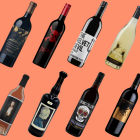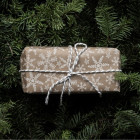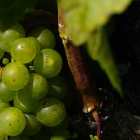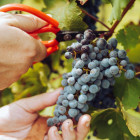Come October, while the winemakers of sunny southern Europe and California are looking forward to a well-earned winter break, those in more northern climates are getting ready for a more unusual harvest season. These are the makers of icewine (or Eiswein, in Germany), and their trade is one of exact timing, immense precision and significant toil.
What is icewine?
Despite the name, it’s certainly not just wine that’s been frozen. The title comes from the harvesting process, where grapes are left to freeze on the vine before being picked, pressed and fermented. It’s an extremely exact science, though, as grapes need to be harvested just at the water inside them has crystallised (which is around -7C). This can happen at a moment’s notice – often in the middle of the night – and once the right conditions arrive, winemakers will only have a few hours to pick the entire crop.
Why harvest frozen grapes in the first place?
Water inside a grape will freeze faster than the grape’s acid and sugars, so they’re essentially separated for a short time. If the grapes are pressed while frozen, the liquid will have a high concentration of acid and sugar, with water remaining behind as ice. This results in extremely pure, intense flavours not found in any other kind of wine. It’s extremely sweet – far more so than traditional dessert wine and certainly an acquired taste for some.
Where is icewine made?
Icewine – or Eiswein – originated in Germany in the late 18th century, although there is some evidence to suggest it was made during the Roman period, too. The practice eventually made its way to Canada, where it gained popularity during the 1970s and 80s. While icewine is made in cold climates across the world, Germany and Canada is responsible for more than 75% of the total global output. Both countries have strict measures in place governing the way icewine is produced.
Technically, icewine can be made from any variety, although Riesling is typically favoured by German producers and Vidal by those in Canada. Some producers are experimenting with grapes such as Chenin Blanc and Merlot. Icewine made from white grapes is usually pale yellow or light gold and deepen with age, while red grapes yield a light pink colour.
Why is icewine so expensive?
Producing icewine is a major undertaking. It’s hugely labour intensive, requires specialist equipment and involves a great deal of risk – sometimes the right conditions don’t arrive at all. On top of that, each grape only contains around one drop of icewine, so yields are small even when conditions are optimal. As such, icewine is usually sold in quarter (187ml) or half (375ml) bottles. Smaller bottles start at around £20, although more prestigious names – and icewines aged in oak barrels – can command upwards of £100.
There are cheaper alternatives available, though. Some producers will use cryogenic extraction, where grapes are frozen artificially for more consistent results. These wines are labelled as ‘iced wine’, ‘icebox wine’ or ‘vin de glaciere’ and are – true icewine advocates will argue – a poor substitute for the real, naturally-frozen product.
How should icewine be served?
As with white wine, icewine should be served chilled but not too cold. It’s best served in a white wine glass so its flavours can breathe, but forget about the usual measures – it’s an intense wine so pour small servings of around six centilitres.
While classified as a dessert wine because of its incredible sweetness, a good overall wine-pairing rule of thumb is never to serve anything sweeter than the wine itself – and you’d struggle to deviate from this with icewine, given its intensity. As such, assorted cheeses and salty hors d’oeurves are always a sure-fire winner. If you’re a real sucker for sweet things, though, a plain cheesecake will also pair nicely.






